-
 2025-12-19 21:39
2025-12-19 21:39
By Soheila Zarfam
The US playbook: deception before war, bullying after
Pezeshkian says he won’t accept 'degrading' pre-conditions after his previous attempt at diplomacy was cut short by American bombs
TEHRAN – A deep mistrust of American politicians has been a prevalent sentiment among Iranians for decades, dating back to the 1953 U.S.-led coup against the democratically elected government of Mohammad Mosaddegh.
-

By staff writer
Proxy theater in the Persian Gulf: Israel scripts, UAE performs
TEHRAN – Israel’s war on Gaza has been marked by mass civilian deaths, starvation tactics, and the destruction of homes, hospitals, and refugee camps. At a time when international courts and human rights groups are demanding accountability, the United Arab Emirates has not stepped back. It has stepped in.
-

By Sondoss Al Asaad
Lebanese parliament pushes back, breaks boycott
BEIRUT—On Thursday, Lebanon’s parliament sent a decisive signal: political blackmail no longer guarantees paralysis.
-

By Wesam Bahrani
Sydney attack: Israel’s balance of gains and losses
TEHRAN – Israeli media’s interpretation of the terrorist attack in Sydney is marked by contradiction and confusion.
-

By Xavier Villar
Why terrorists in Iran’s borderlands are rebranding
Separatists now disguising as national opposition forces to survive after years of no traction
MADRID – The statement issued on December 10 by the spokesperson of the so-called Jaish al-Adl, a terrorist group responsible for the murder of dozens of Iranian security personnel and citizens in recent years, announcing the formation of the so-called “Popular Fighters’ Front,” was received in Iran’s security circles not with surprise, but as confirmation of a predictable tactic outlined in an increasingly well-known manual of regional destabilization.
-

By Mahnaz Abdi
Beyond the Strait: Hormozgan charts course from transit hub to economic powerhouse
TEHRAN- Strategically positioned at the mouth of the Strait of Hormuz—the world's most critical energy chokepoint—Iran's Hormozgan province serves as the nation's indispensable commercial gateway. Home to major ports like Shahid Rajaei, the country's largest container port, it is the primary hub for Iran's import, export, and transit trade, connecting global markets from the Persian Gulf to Africa and India.
Politics
-
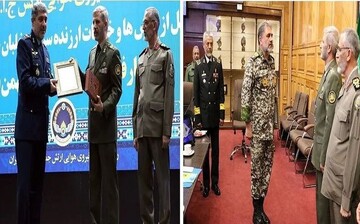
Two new senior Iranian commanders appointed
TEHRAN – Iran has made new changes to its military leadership, six months after it fought a war against Israel and the United States.
-

Washington still stalled on sanctions as it targets 29 vessels in attempt to stop Iran's oil sales
TEHRAN – Leaders in the United States are continuing their efforts to prevent Iran from selling oil, even as Iran appears to have mastered the art of avoiding sanctions and its main customers refuse to stop purchasing Iranian energy.
-
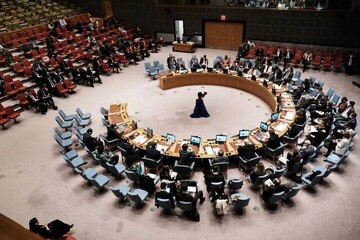
Iran warns against resurgence of terrorism in Syria
TEHRAN – Iran’s Ambassador and Permanent Representative to the United Nations Amir-Saeed Iravani says the re-emergence of terrorism and an increase in the operational capability of the Daesh terror group in Syria would pose a threat to the Arab country as well as the entire region.
Sports
-

Joyless football in Iran
TEHRAN – Tractor defeated Persepolis in the Round of 32 of the 2025/26 Iran Hazfi Cup, but the night raised a deeper question: when insults replace excitement, what remains of the game we love?
-

Tractor beat Persepolis in 2025/26 Hazfi Cup Round of 32
TEHRAN – Tractor football team defeated Persepolis 8-7 on penalty shootout in 2025/26 Iran’s Hazfi Cup Round of 32 on Thursday.
-

Tractor vs Persepolis: A high-stakes Hazfi Cup showdown
TEHRAN - This Thursday, Tractor and Persepolis football teams will face off in the Round of 32 of Iran’s Hazfi Cup at the Yadegar-e Emam Stadium in Tabriz, kick-off scheduled for 16:15 local time.
Culture
-

Visual album “Come, O Love” featuring Shahram Nazeri, Davlatmand Kholov unveiled in Konya
TEHRAN – The unveiling ceremony of the visual album “Come, O Love,” featuring Iranian tenor Shahram Nazeri and the late Tajik singer Davlatmand Kholov, was held on Tuesday at the Selçuk University in Konya, Turkey, coinciding with the 752nd death anniversary of the great Persian-speaking poet Rumi.
-
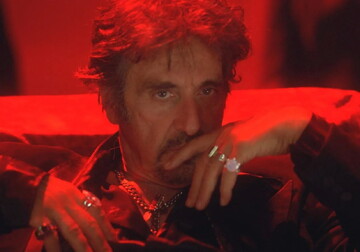
IAF cinematheque to screen Al Pacino’s “Wilde Salomé”
TEHRAN- The Cinematheque of the Iranian Artists Forum (IAF) is scheduled to screen a recorded stage performance of “Wilde Salomé” on Wednesday.
-

What’s in Tehran art galleries
Tehran’s CAMA – Contemporary and Modern Art Gallery is playing host to an exhibition of paintings by Jamshid Haqiqatshenas. The exhibit will be running until December 31 at the gallery located at No. 44, 10th Golestan, Pasdaran St.
Economy
-

Beyond the Strait: Hormozgan charts course from transit hub to economic powerhouse
TEHRAN- Strategically positioned at the mouth of the Strait of Hormuz—the world's most critical energy chokepoint—Iran's Hormozgan province serves as the nation's indispensable commercial gateway. Home to major ports like Shahid Rajaei, the country's largest container port, it is the primary hub for Iran's import, export, and transit trade, connecting global markets from the Persian Gulf to Africa and India.
-
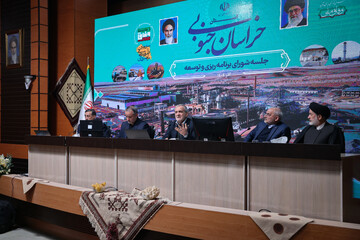
President unveils economic drive in South Khorasan, touts national strength
TEHRAN – President Masoud Pezeshkian concluded a significant working visit to South Khorasan province, heralding a major injection of capital and a series of development projects aimed at boosting the regional and national economy.
-
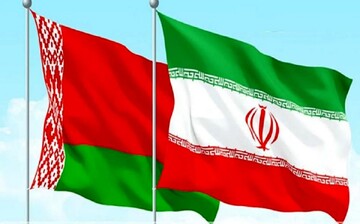
Tehran, Minsk explore co-op opportunities in oil, petchem sectors
TEHRAN- Opportunities and capacities for cooperation between Iran and Belarus were discussed in the third session of the two countries' oil industry working group, which was held virtually, with the aim of following up and implementing the bilateral oil memorandum of understanding signed between Iran’s Oil Ministry and Belarus' Belneftekhim (an association of petrochemical companies in Belarus, subordinated to the Council of Ministers).
Society
-

Over 1.7 million Afghans deported from Iran in first nine months of 2025: UNHCR
TEHRAN – In the first nine months of 2025, more than 1.7 million Afghan refugees have returned from Iran to Afghanistan, the United Nations High Commissioner for Refugees (UNHCR) reported in a press release on October 27.
-

Most-cited researchers in ISC database increase yr/yr
TEHRAN – The Islamic World Science Citation (ISC) Institute database has recognized 557 most-cited Iranian researchers in human sciences, social sciences, art, and architecture in the current Iranian year, which started in March 2025, indicating a 14 percent increase compared to 489 researchers in the previous year.
-
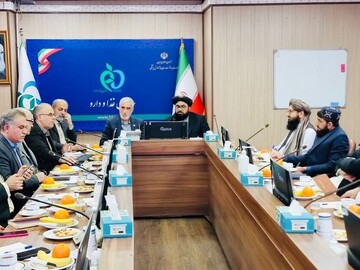
Afghanistan seeks to bolster health co-op with Iran
TEHRAN – A delegation from Afghanistan’s Food and Drug Administration met with Iranian counterparts in Tehran on Wednesday to explore the potential for expanding ties in the health sector.
Tourism
-

Golestan at a glance: forests, ancient monuments and Caspian landscapes
GORGAN - Golestan is one of the least visited provinces in Iran, yet for many travelers who take the time to explore it, the region may quickly become a favorite destination.
-

Tourism minister says Yalda can serve as platform for regional dialogue
TEHRAN - Iran’s Minister of Cultural Heritage, Tourism and Handicrafts, Seyyed Reza Salehi-Amiri, has said that the ancient festivity of Yalda should be viewed as a shared cultural framework for dialogue, cohesion and civilizational convergence across the region.
-

Iran’s Ilam, Iraq’s Karbala discuss joint tourism exhibition
TEHRAN - Iranian and Iraqi officials have reached an initial agreement to hold a joint handicrafts and tourism exhibition in Iraq, Ilam’s cultural heritage chief said, following talks between provincial authorities.
International
-

Proxy theater in the Persian Gulf: Israel scripts, UAE performs
TEHRAN – Israel’s war on Gaza has been marked by mass civilian deaths, starvation tactics, and the destruction of homes, hospitals, and refugee camps. At a time when international courts and human rights groups are demanding accountability, the United Arab Emirates has not stepped back. It has stepped in.
-

Lebanese parliament pushes back, breaks boycott
BEIRUT—On Thursday, Lebanon’s parliament sent a decisive signal: political blackmail no longer guarantees paralysis.
-

Sydney attack: Israel’s balance of gains and losses
TEHRAN – Israeli media’s interpretation of the terrorist attack in Sydney is marked by contradiction and confusion.
Video Comment
-

Ayatollah Khamenei’s vision of freedom and humanity discussed in intl. conference
-

Iran hosts SCO joint anti-terror drills
-

Holy Mary Metro Station marks interfaith unity in Tehran
-

Academics analyze social dimensions of Resistance in Tehran conference
-

Culture minister highlights year of progress in arts, global image enhancement
Most Viewed
-
Tractor beat Persepolis in 2025/26 Hazfi Cup Round of 32
-
Proxy theater in the Persian Gulf: Israel scripts, UAE performs
-
The US playbook: deception before war, bullying after
-
Why terrorists in Iran’s borderlands are rebranding
-
Tehran, Minsk explore co-op opportunities in oil, petchem sectors
-
Two new senior Iranian commanders appointed
-
Over 1.7 million Afghans deported from Iran in first nine months of 2025: UNHCR
-
Joyless football in Iran
-
Transit of goods via Iran reaches 13.5m tons in 8 months
-
Beyond the Strait: Hormozgan charts course from transit hub to economic powerhouse
-
Sydney attack: Israel’s balance of gains and losses
-
Afghanistan seeks to bolster health co-op with Iran
-
Lebanese parliament pushes back, breaks boycott
-
President unveils economic drive in South Khorasan, touts national strength
-
Iran, Turkey examine co-op in pharmaceutical, medical equipment industries







